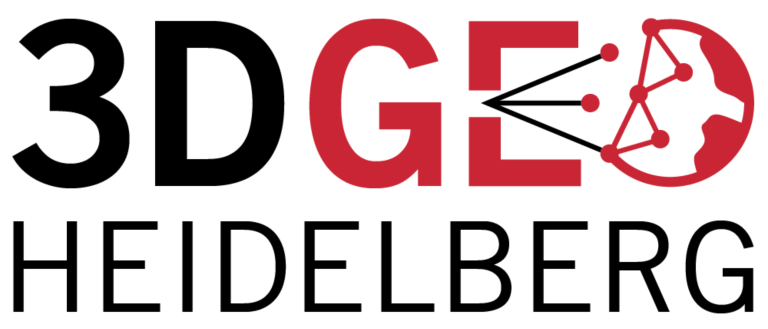GIScience News Blog
-
A Web App to generate and disseminate knowledge on urban green space qualities and their accessibility
Urban green spaces (UGSs) can provide important ecosystem services for citizens and their well-being. To make use of these services according to UGS user demands, urban residents, tourists, and city administrations should know where UGSs are located, what qualities they have and how to reach them on convenient routes. A new open access paper at…
-
MapSwipe is App of the Day in Apple AppStore
MapSwipe has ben announced as ‘App of the Day‘ in the Apple AppStore! (27.08.2021) Thank you to all our volunteers for the continued help and support which keeps the app going. Read the blogpost here: https://apps.apple.com/ca/story/id1559236909 The team at the Heidelberg Institute for Geoinformation Technology (HeiGIT) and the GIScience Research Group at Heidelberg University has shaped MapSwipe’s…
-
ohsome Region of the Month – August
Hello and welcome back to the ohsome Region of the Month-blog post series where you can read about potential use cases of the ohsome API and maybe even get inspired to send some requests of your own. If you are new to the series you should definitely take a look at former blog posts, for example our last…
-
New paper: Opaque voxel-based tree models for virtual laser scanning in forestry applications
In the SYSSIFOSS project, we are investigating how we can take advantage of virtual laser scanning (VLS), the simulation of laser scanning in a computer environment, in forestry applications. These applications include survey planning and optimization, sensitivity analyses, and algorithm development. For example, VLS may be used to investigate the influence of different sensor and…
-
Multi-source 3D point cloud acquisition at the AHK rock glacier
Within the AHK-4D project, we continually monitor topographic change at the alpine rock glacier Äußeres Hochebenkar in Austria. Based on multitemporal and multi-source 3D point clouds at up to two-week acquisition intervals, we are developing methods to quantify the magnitudes and frequencies of individual processes of topographic change over varying timescales. This year, we have…
-
Revamped openrouteservice client for disaster management
We are happy to announce a revamped openrouteservice maps client for disaster management. It was built based on the new openrouteservice maps client, that is an open source route planner with plenty of features. Specific disaster features were incorporated via the development of developing plugins. It was developed and is maintained by the Heidelberg Institute for…
-
Analysing the Impact of Large Data Imports in OpenStreetMap
OpenStreetMap (OSM) is a global mapping project which generates free geographical information through a community of volunteers. OSM is used in a variety of applications and for research purposes. However, it is also possible to import external data sets to OpenStreetMap. The opinions about these data imports are divergent among researchers and contributors, and the…
-
The role of data in transformations to sustainability: a critical research agenda
A recently published article in ‘Current Opinion in Environmental Sustainability‘ investigates the role of digital technologies and data innovations, such as big data and citizen-generated data, to enable transformations to sustainability. We reviewed recent literature in this area and identified that the most prevailing assumption of work is related to the capacity of data to…
-
Open laser scanning data of trees – SYSSIFOSS project
Our forest laser scanning dataset collected in the frame of the SYSSIFOSS project is now openly available through the PANGAEA Data Publisher: Weiser, H., Schäfer, J., Winiwarter, L., et al. (2021): Terrestrial, UAV-borne and airborne laser scanning point clouds of central European forest plots, Germany, with extracted individual trees and manual forest inventory measurements. PANGAEA,…
-
Routenplanung im Überflutungsgebiet: openrouteservice nutzt Copernicus EMS Flut-Daten in spezieller Lösung
Die aktuelle Flut in Deutschland hat zahlreiche Straßen in den betroffenen Gebieten zerstört oder temporär unpassierbar gemacht. HeiGIT arbeitet an freien und offenen, auf Geodaten-basierten Lösungen für die humanitäre Hilfe. Hierzu zählen insbesondere Routenplanung unter Berücksichtigung aktueller Katastrophendaten wie z.B. Überflutungsgebiete und zerstörter Strassen. Für die aktuelle Flutkatastrophe in Deutschland und Nachbarstaaten hat HeiGIT nun…
-
Time Series-Based Coastal Surface Change Analysis @ISPRS2021
Our work on “Time Series-Based Coastal Surface Change Analysis using Hourly Terrestrial Laser Scans” was featured with a live presentation at this year’s digital event of the ISPRS Congress. The presentation by Katharina Anders was further made available as pre-recorded video, which you can now watch on the 3DGeo YouTube channel: The presented work is…
-
SWR broadcast on the research project HEAL: Taking the safe route through the heat – Transdisciplinary project HEAL makes everyday life easier for at-risk groups
(deutsch unterhalb) Aerial view of Heidelberg’s old town with the university square. The lack of shade causes heat stress conditions and thus makes the square almost unusable at increased temperatures. This was a site of the study on climate change adaptation of public spaces (Foshag et al. 2020) (Photo: Kathrin Foshag). Climate adaptation strategies to support…
3D 3DGEO Big Spatial Data CAP4Access Citizen Science Climate Change Conference crisis mapping Crowdsourcing data quality deep learning disaster DisasterMapping GIScience heigit HELIOS HOT humanitarian humanitarian mapping Humanitarian OpenStreetMap team intrinsic quality analysis landuse laser scanning Lidar machine-learning Mapathon MapSwipe Missing Maps MissingMaps ohsome ohsome example Open data openrouteservice OpenStreetMap OSM OSM History Analytics Quality quality analysis remote sensing routing social media spatial analysis Teaching VGI Workshop


